This week in crypto is anything but quiet. Trump’s “Liberation Day” tariffs launched a global trade shock, wiping trillions from stock markets and sending investors scrambling. At first, Bitcoin held strong, even gaining ground while Wall Street bled. But the pressure finally caught up—today, BTC fell below 74.400 € ($80,000) and Ethereum under 1.350 € ($1,450), triggering another wave of fear and liquidations.
Volatility remains high, fake headlines are moving markets, and global retaliation is just getting started. What comes next could shape the next phase of the bull—or signal more storm clouds ahead.
Trump’s “Liberation Day” Brings Global Tariffs and Sparks Market Turmoil
On April 2, U.S. President Donald Trump signed a sweeping executive order establishing reciprocal trade tariffs on nearly every country that imposes import taxes on American goods. Dubbed “Liberation Day,” the announcement marks a dramatic shift in U.S. trade policy—and one with immediate ripple effects across global markets, including crypto.
The new order adds a 10% tariff on all imports and sets even higher rates for some countries—like 34% for China, 24% for Japan, 20% for the EU, and 25% for Canada. A separate 25% tariff also applies to all car imports starting April 5.
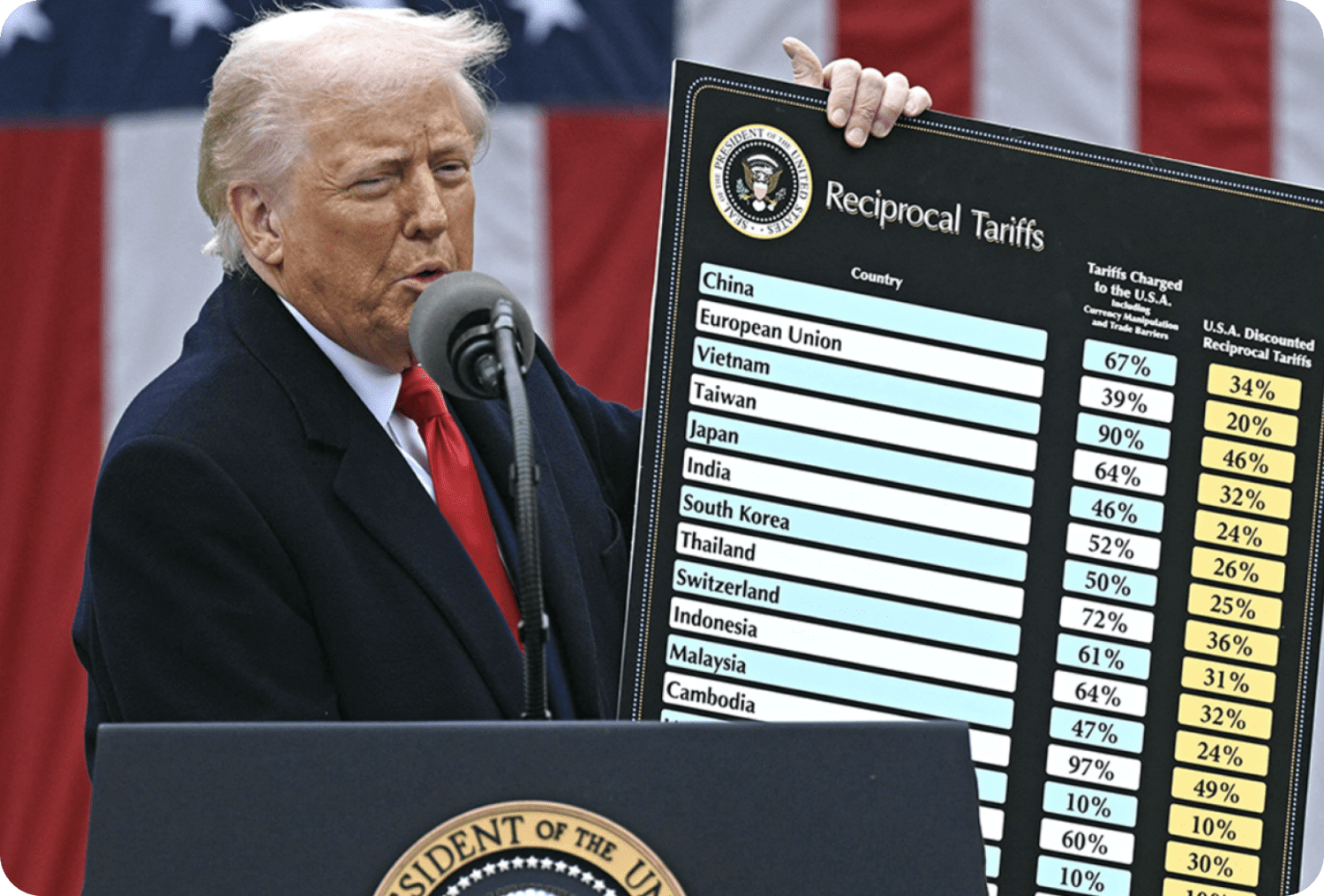
Trump also revived an old idea: abolishing the federal income tax and replacing it entirely with tariff revenue. According to his administration, this could save each American taxpayer up to $325,000 over their lifetime. During his White House address, Trump referenced the era from 1789 to 1913, when the U.S. operated as a “tariff-backed” economy, arguing that this return to protectionism would restore national prosperity.
But the markets didn’t share his optimism. Crypto, stocks, and traditional assets reacted sharply to the announcement. While the full impact of these sweeping tariffs remains uncertain, investors are bracing for economic disruption, trade retaliation from global partners, and even rising recession risks.
Historically, trade wars have rarely ended well. The Smoot-Hawley Tariff Act of 1930, for example, triggered a wave of retaliatory tariffs and is widely believed to have worsened the Great Depression. More recently, Trump’s 2018–2019 trade war with China led to increased costs for U.S. consumers and businesses, disrupted global supply chains, and created long-term strain between major economic powers. Economists largely agree that trade wars tend to slow growth, increase uncertainty, and hurt both sides over time—especially when implemented unilaterally.
Bitcoin Holds Strong as Wall Street Shakes
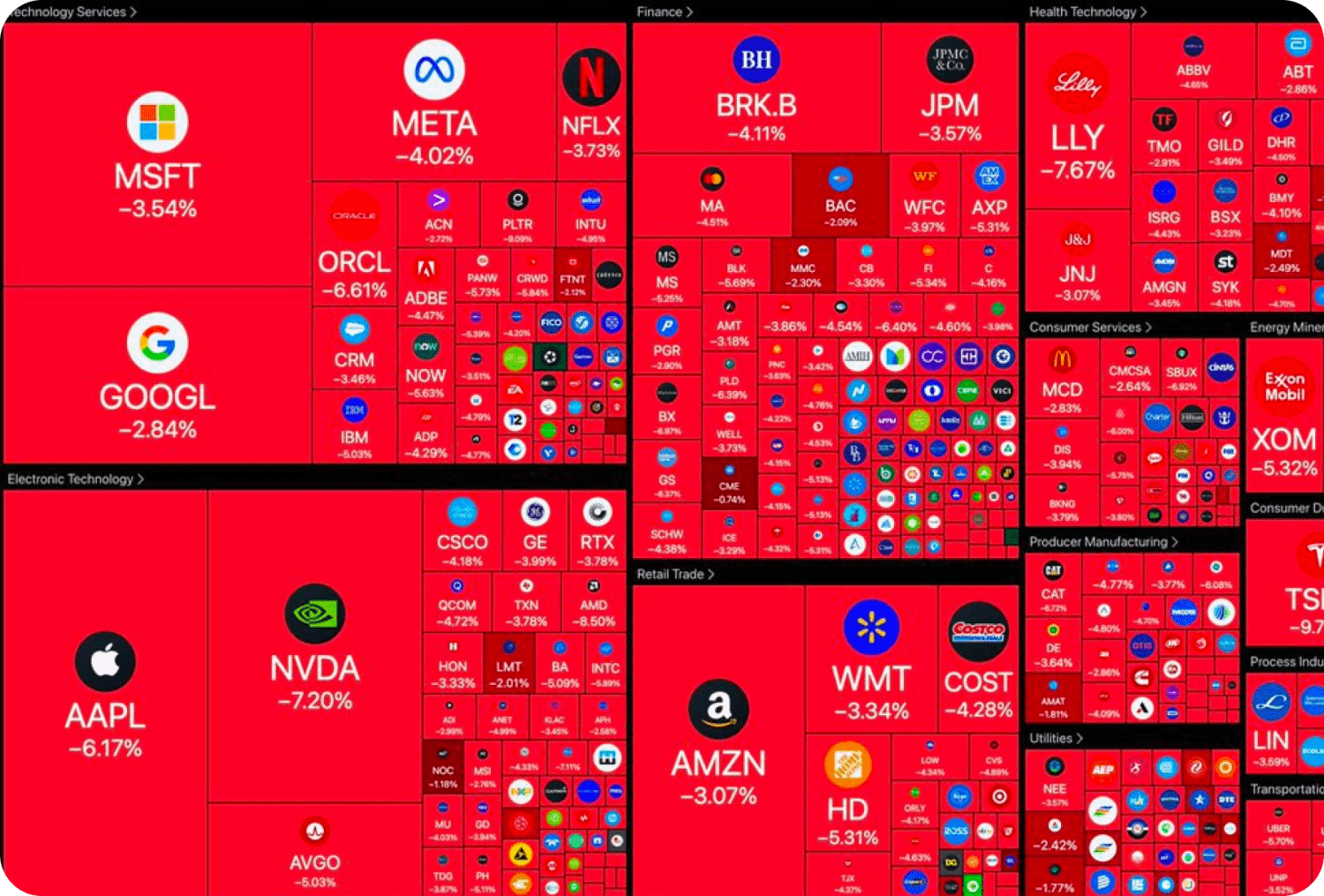
As soon as Trump’s tariff plan was announced on April 2, both stock and crypto markets reacted fast. Prices across the board started to fall—but how they fell was very different.
Traditional markets took a beating. Within just a few days, the U.S. stock market lost over $5 trillion, with companies like Tesla and Apple dropping more than 7–10%. The S&P 500 saw one of its worst two-day sell-offs since the COVID crash of 2020. Many experts now say the Nasdaq 100 has entered bear market territory, and recession fears are rising fast.
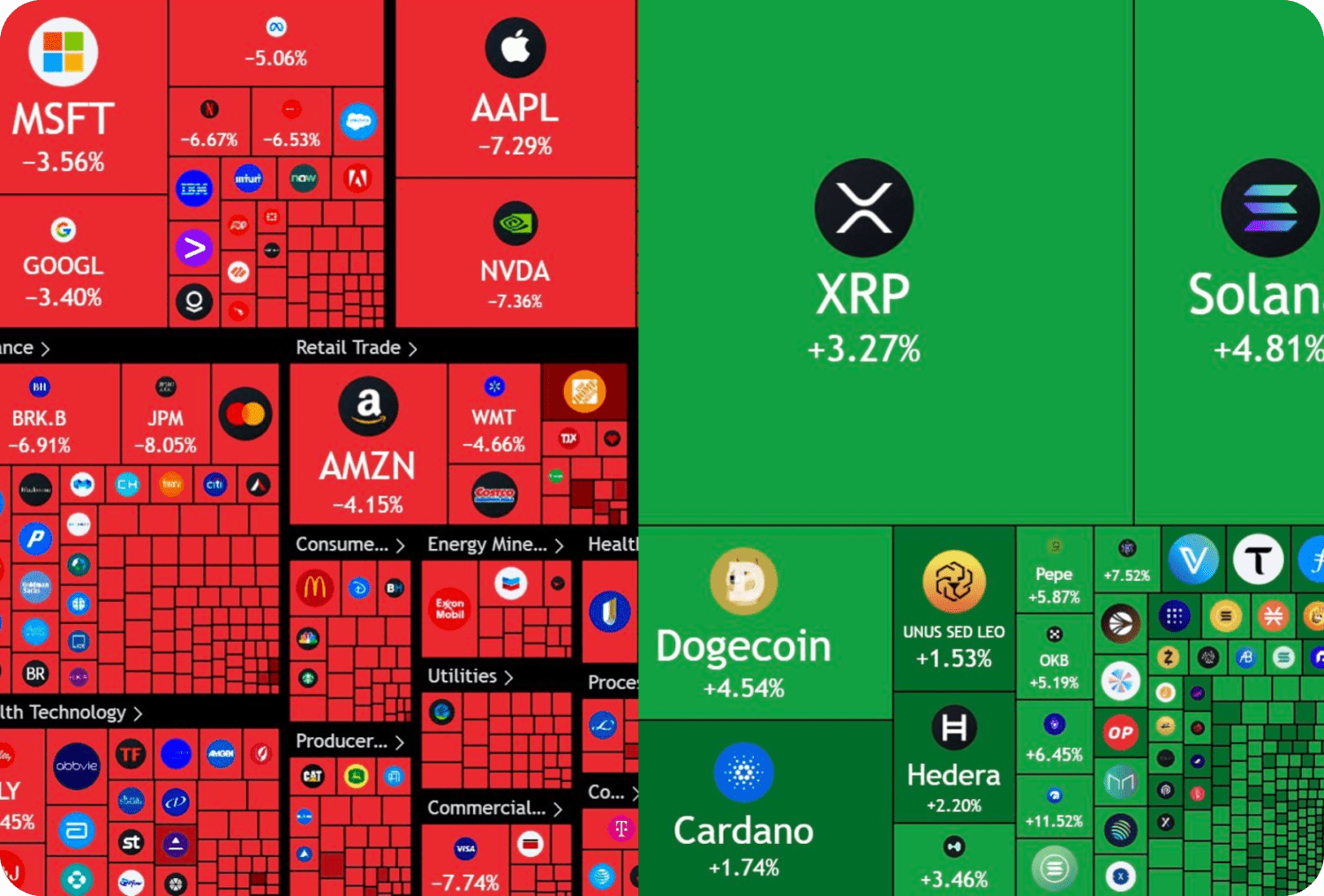
Bitcoin (BTC) and the crypto market also dropped—but far less. While stock market crashed, BTC dropped but remained above $80,000 – it held relatively steady compared to the chaos on Wall Street. Some altcoins even posted gains during the initial panic. Analysts say this could signal a new level of maturity for crypto.
This is what people mean when they say Bitcoin is becoming “digital gold.” In times of financial stress, more investors are treating BTC as a hedge—a safer place to store value, like they would with gold. It’s not perfect, and prices still move fast, but crypto didn’t crash nearly as hard as stocks. That’s a major shift.
Crypto Markets Bleed as Stock Markets Open Red
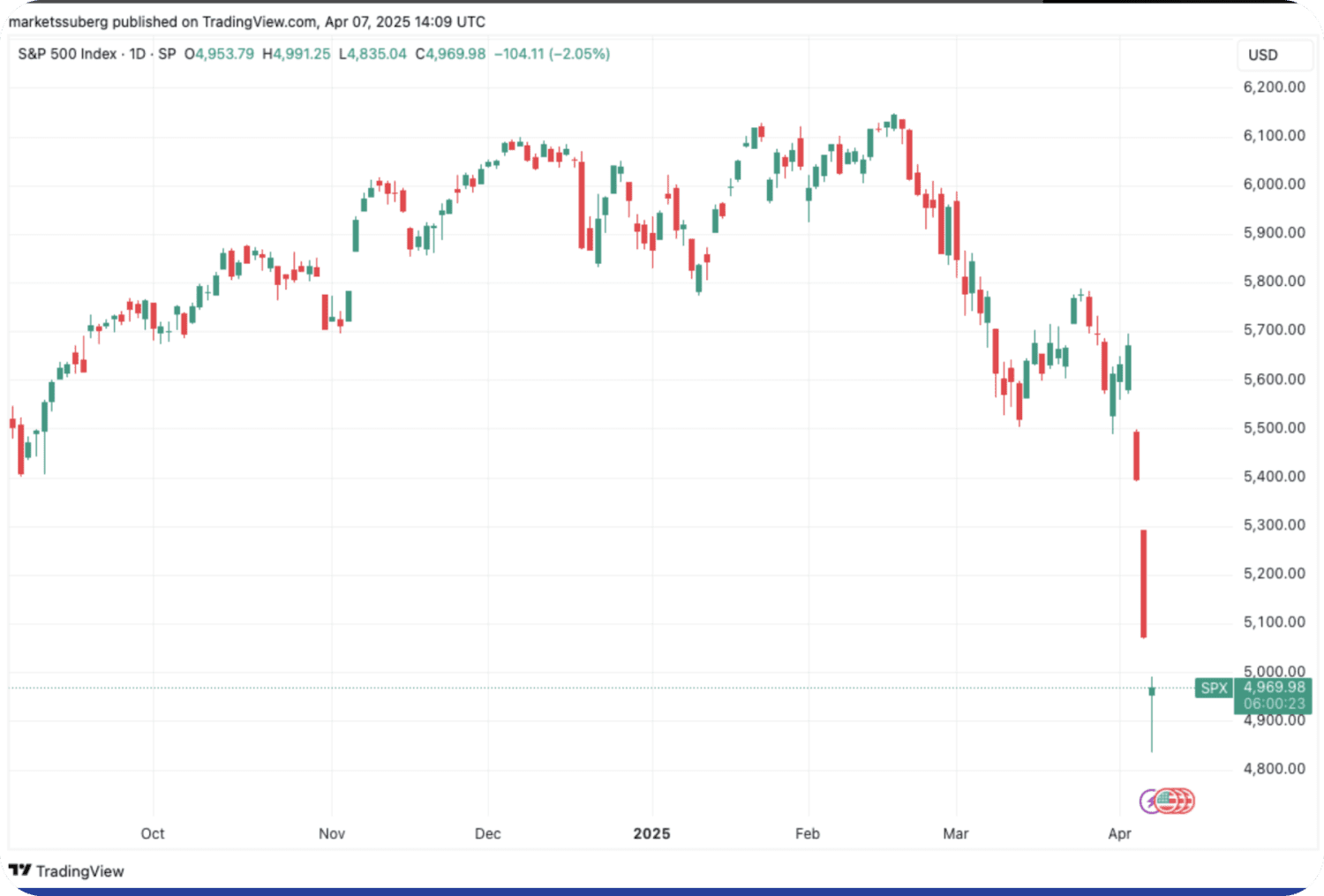
After a shaky weekend of stock futures and warnings of more pain ahead, markets opened deep in the red on Monday.
Over $2.1 trillion was wiped from the U.S. stock market at open, with major indexes continuing last week’s historic drop. The S&P 500 officially entered bear market territory, while investor fear levels remained extremely high.
Crypto, which had initially shown resilience, couldn’t hold out forever. On Sunday night and into Monday, the market saw sharp liquidations. Bitcoin briefly touched $74,400 before bouncing back above $76,000.Ethereum (ETH) dropped over 19% to around $1,450. Altcoins followed closely—Ripple (XRP) fell 9.41%, Solana (SOL) 7.11%, and Dogecoin (DOGE) 8.71%. In total, the crypto market dropped more than 13%, with over $1.38 billion in liquidations, mostly from long positions.
Fake Pump? Market Surges and Drops Within Hours
On Monday afternoon, markets saw a rapid recovery—followed by an equally fast reversal.Bitcoin surged past $81,000 and U.S. stocks jumped after headlines claimed President Trump was considering a 90-day pause on tariffs for all countries except China. The S&P 500 spiked nearly 7% in minutes,and crypto followed, with BTC breaking resistance and pushing above key levels.
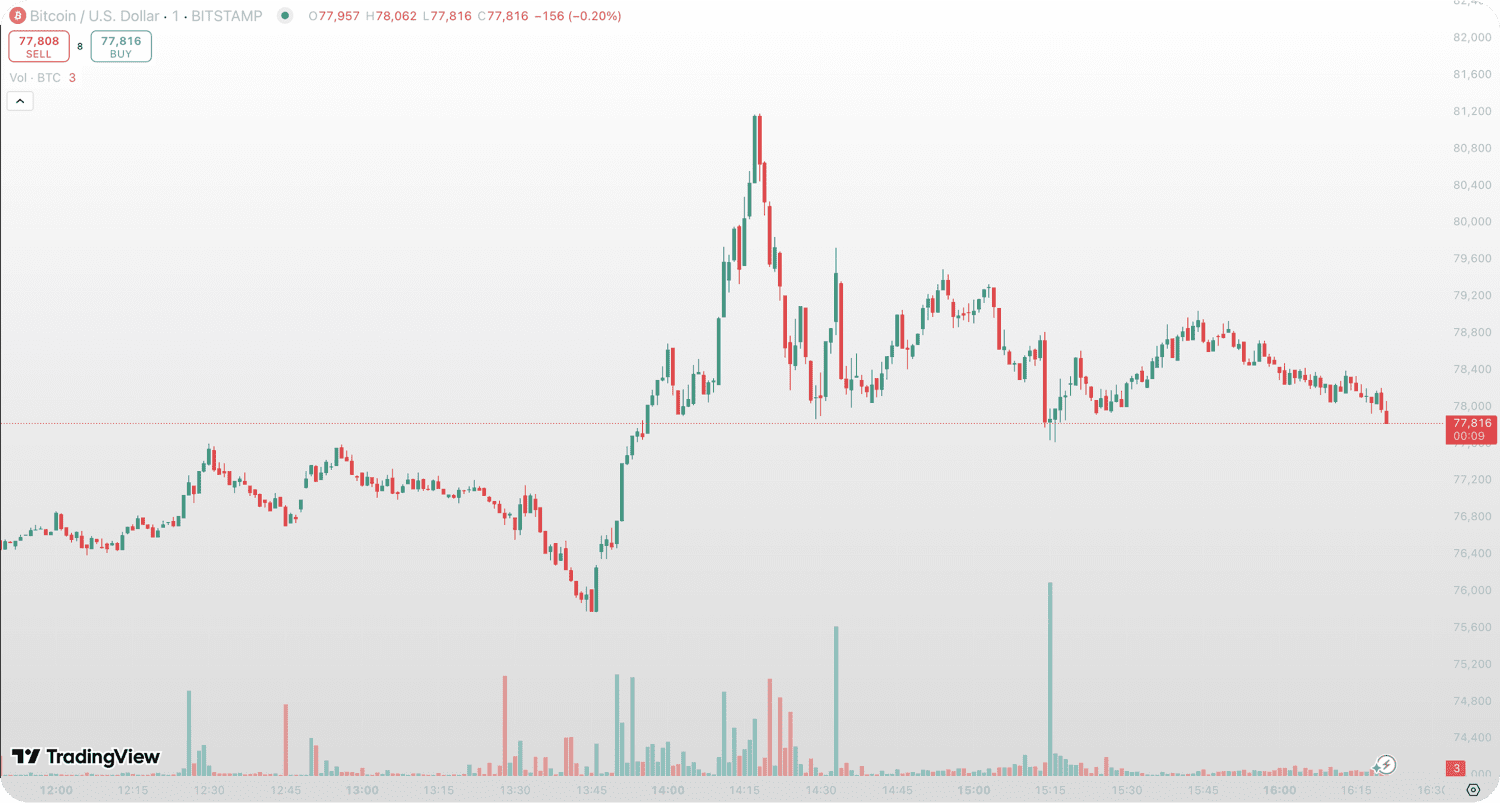
But the excitement didn’t last. Shortly after the rally, the White House denied any official plans for a tariff pause. CNBC reported that no one inside the administration was aware of such a move, casting serious doubt on the rumor.
As quickly as it rose, the market began to drop again. The bounce turned into confusion—and reminded everyone just how reactive and unstable things still are.
What’s Next: Negotiations, Retaliation, and Volatility Ahead
The next few weeks are expected to be filled with high-level talks and rapid developments.

Nearly every major U.S. trade partner has reached out to begin discussions. The European Union said it’s ready to negotiate a “zero-for-zero” tariff agreement, and countries like Vietnam and Japan are already signaling willingness to cooperate. A deal with China, however, looks much less likely.
Instead of calming tensions, China responded by raising its tariffs by 34%—and Trump quickly fired back, threatening an additional 50% tariff if China doesn’t back down. The situation is clearly escalating on that front.
Just today, the EU proposed a 25% tariff on U.S. goods, marking a sharp shift in tone just days after talks of cooperation. At the same time, Trump abruptly cancelled a press conference with Israeli Prime Minister Netanyahu, who had flown in to negotiate a tariff deal—adding further uncertainty to the diplomatic landscape.
Markets are likely to remain volatile.
Traders are watching every headline, every statement, and every rumor. There’s also growing speculation that the Federal Reserve could step in with rate cuts to calm the storm, just like during the COVID crash in 2020.
Whether talks lead to peace or more trade war, one thing is clear: this isn’t over.
And the market is paying attention.
From historic tariffs to flash crashes and rumors moving billions, this week has shown just how sensitive—and globally connected—the markets are. Bitcoin’s resilience offers a glimmer of confidence, but with escalating trade tensions, a potential Fed response, and continued market fear, staying informed is your best investment. This is a time for steady hands and clear eyes.





